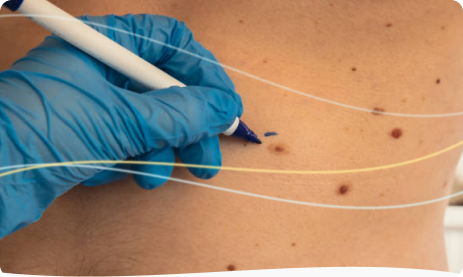Skin Cancer Removal and Reconstruction on the Face and Neck
Skin cancer is the most common form of cancer in the United States. It involves abnormal growths of skin cells that can form anywhere on the body, but most frequently appear in areas that are regularly exposed to the sun such as the skin of the face, head and neck. In addition to excessive sun exposure, certain factors, such as fair skin, moles and aging, can also increase the risk of skin cancer.
Basal cell carcinoma is the type of skin cancer most frequently found on the face, head and neck. While these lesions can often be removed with a minimally invasive procedure when caught early, all forms of cancer carry a risk of metastasizing to other sites. Therefore, skin exams should always include a thorough check of the entire head and neck to ensure that any abnormal changes are discovered quickly.
Mohs micrographic surgery is a safe and effective treatment for skin cancer that thoroughly excises the tumor while only mildly disturbing surrounding tissue. It is the only skin cancer treatment available that targets just cancerous tissue through comprehensive microscopic examination of the affected area.
Mohs surgery excises not only the visible tumor but also any roots that may have extended beneath the surface of the skin. Five-year cure rates have been demonstrated up to 99 percent for first-treatment cancers and 95 percent for recurring cancers.
This procedure is most commonly used for the treatment of basal and squamous cell carcinomas, although it can also be used to treat melanoma and other types of cancer. Mohs surgery is often recommended for recurring cancer because its results are so thorough. It is also ideal for treating cancer in cosmetically and functionally prominent areas such as the face, head and neck.



